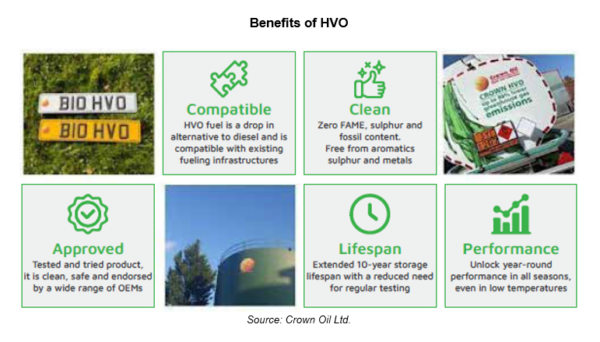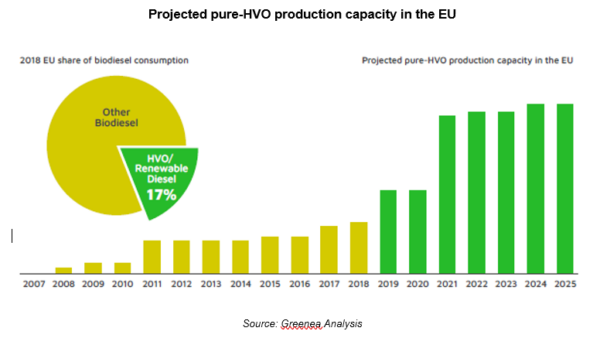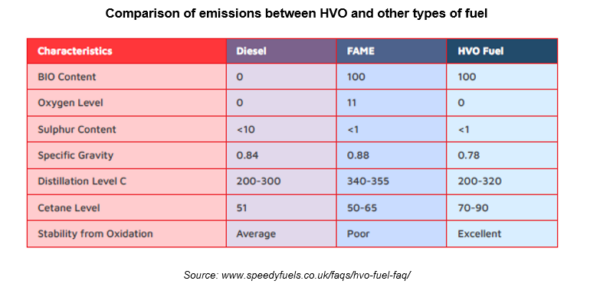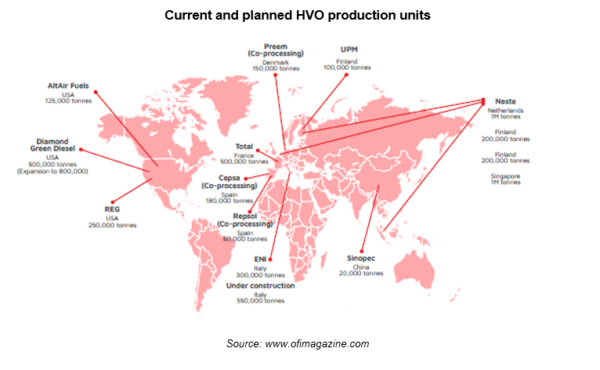
This site
is mobile
responsive
With the current trend of rapid climate change experienced worldwide, contingency plans such as migrating towards cleaner and more sustainable energy sources are essential to ensure the sustainability of Mother Nature. Looking at all the possible solutions, it has been found that hydrogenated vegetable oil (HVO) is one of the most prominent green energy alternative that has gained significant attention worldwide due to its potential to reduce CO2 emissions.
HVO is a renewable diesel produced from vegetable fats and oils through the hydrogenation process. Due to several advantages over fossil diesel and regular biodiesel, HVO is attaining much popularity globally with increasing investment being channeled towards this emerging technology.
Global demand for clean hydrogen spurs rise in prominent projects
Despite the surge of HVO demand within the Western region, the rise in the need to cater to the future Eastern market opens up various new investment opportunities to both existing and potential marketeers. The country with the most demand for HVO is the United States of America, followed by European countries. However, the growing interest stemming from the Asian region may change the map of the HVO supply industry as a whole.
Through hydrogen treatment, treated animal fats (including wastes and residues) and vegetable oils exhibit fuel properties that are close to fossil-based fuels and they can be easily modified to suit the needs of their end-users. Furthermore, due to its hydrocarbon structure, HVO has similar physical characteristics to diesel, allowing it to be directly utilised with little or no alteration needed. Due to its versatility, HVO holds great potential to complement fossil-based fuels in terms of its performance and future sustainability.

Despite having both the European Union (EU) and the United States monopolising the top market for the HVO industry, Asia is a rising competitor due to the increase in interest of Asian economic superpowers, such as Japan and China to further boost their newly-strategised production capacity as well as shares of the renewable fuels market within the Asian region. However, because the full realisation of HVO’s potential applications may not be within the near future, the motivation of its up-and-coming market segment within the aviation fuel industry might serve as the elevating factor to further promote its debut within the biofuels sector.

Comparable to other forms of biodiesel, key features of HVO that are worth highlighting include its relatively low freezing point, which makes it suitable to be used as jet fuel for countries with cold climates, its longer shelf life (up to 10 years), and its relatively low effluent emission makes HVO a highly preferred and feasible alternative for diesel substitution.
Additionally, with the absence of fatty acid methyl ester (FAME) coupled with the negligible presence of sulphur within its composition, HVO will not be facing any stability issues in the long run, unlike mineral diesel and biodiesel. Thus, HVO’s excellent performance and significant characteristics hold tremendous potential to flourish due to its various operational and environmental benefits.

The emergence of HVO as one of the key players within the jet fuel market stems from discovering its benefit of better cold-weather performance compared to biodiesel. In addition, the cold weather characteristics of HVO can be adjusted during the manufacturing process, which makes it more attractive to its diverse range of consumers.
As such, the market of HVO production can be focused on jet fuel consumption since it is one of the major users of fossil fuels to date. The jet fuel market is expected to reach USD120 billion (RM527.67 billion) in 2026(1) with a compound annual growth rate (CAGR) of more than 1% especially as the aviation industry is now back on track after weathering through the COVID-19 pandemic over the past few years.
To cater to the needs of both existing and future patrons, more investments in the HVO manufacturing sector will be required to ensure that it can meet its worldwide demand.
Malaysia’s way forward with HVO
In March 2006, the Malaysian Government launched the National Biofuels Policy (NBP) to support the reduction of Greenhouse Gases (GHG) and fossil fuel dependency. The goal of NBP is to further reduce the emission rate of GHG to 45% of gross domestic product (GDP) by 2030, on top of minimising the country’s dependency on fossil fuels. This initiative also promotes the diversification of downstream palm oil products and thus, help boost the revenue for oil palm smallholders through the oil market price control strategy.
In line with the Malaysian Government’s vision of heading towards a sustainable future by reducing its carbon footprints, various forms of incentives are available to promote the commercialisation of HVO as the second-generation biodiesel and bio-jet fuel. This is done with the hope of catering to thevast demand within the global market upon commercialisation of HVO within the next four to five years.
Malaysia will need to move forward swiftly to embrace this opportunity and enhance its position as a leader in the biofuel industry. It is important to entice global players and technology holders in this space to embrace Malaysia’s green energy initiative towards becoming a sustainable driven nation.
As the government’s principal investment promotion and development agency, MIDA recognises the potential development of HVO as well as the challenges pioneer companies face in setting up such projects in Malaysia. As such, investors are welcomed to approach MIDA’s Chemical and Advanced Materials Division to explore the business prospects of this new growth area. For more information, visit www.mida.gov.my.
